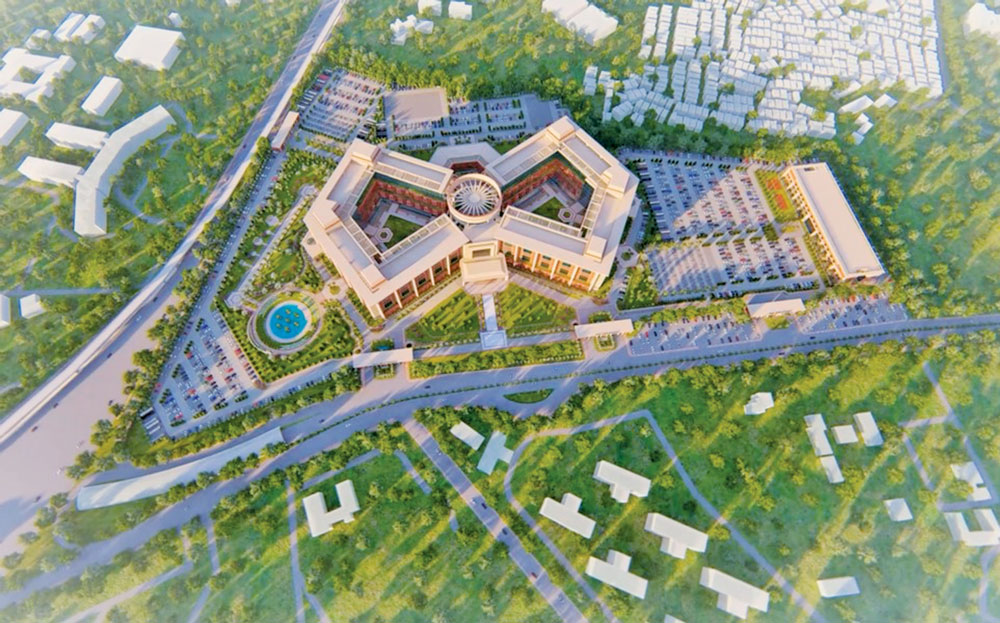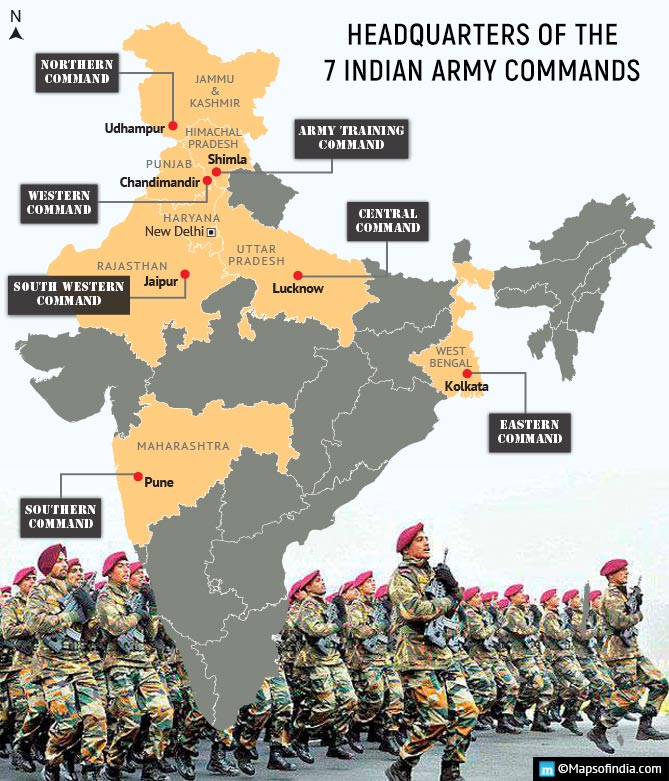Complete Structure of the Indian Army: Understanding Its Organization
The Indian Army is one of the most formidable military forces in the world, known for its discipline, bravery, and efficiency. But have you ever wondered how this massive force is structured? In this blog, we will break down the complete hierarchy of the Indian Army, from the top-level headquarters to the smallest operational unit.
Let’s dive in!
Let’s dive in!
1. Army Headquarters: The Nerve Center
At the top of the Indian Army’s structure is the Army Headquarters (HQ), which is located in New Delhi. It is led by the Chief of Army Staff (COAS), who is the highest-ranking officer in the Indian Army. Currently, this position is held by General Upendra Dwivedi.
The Army HQ oversees and controls all commands and operations of the Indian Army.
2. Army Commands: The Regional Powerhouses
The Indian Army is divided into seven commands, six of which are operational, while one is responsible for training. Each command is led by a General Officer Commanding-in-Chief (GOC-in-C) with the rank of Lieutenant General.
List of Army Commands:
- Western Command – Headquartered in Chandigarh
- Eastern Command – Headquartered in Kolkata
- Northern Command – Headquartered in Udhampur
- Southern Command – Headquartered in Pune
- Central Command – Headquartered in Lucknow
- South Western Command – Headquartered in Jaipur
- Army Training Command (ARTRAC) – Headquartered in Shimla
3. Corps: The Operational Units
Under each command, the army is further divided into Corps, which serve as field formations. Each Corps is led by a Corps Commander with the rank of Lieutenant General.
A Corps usually consists of 3 to 4 Divisions and is responsible for military operations in its designated region.
4. Divisions: The Backbone of the Army
Each Corps is made up of Divisions, which are the primary fighting units of the army. A Division is led by a Major General and typically comprises three to four Brigades.
Types of Divisions in the Indian Army:
- Infantry Divisions – Backbone of ground operations
- Mountain Divisions – Specialized for warfare in high-altitude regions
- Armored Divisions – Equipped with tanks and armored vehicles
- Artillery Divisions – Responsible for long-range firepower
- 18 Infantry Divisions
- 12 Mountain Divisions
- 3 Armored Divisions
- 3 Artillery Divisions
Each Division is further divided into Brigades, which are led by a Brigadier. A Brigade typically consists of three to five battalions, along with artillery and support units.
Types of Brigades in the Indian Army:
- Infantry Brigades – Standard fighting units
- Armored Brigades – Tank-based warfare units
- Artillery Brigades – Specialized in long-range firepower
- Air Defense Brigades – Protects against aerial threats
- Parachute Brigade – Special forces and airborne operations
- Engineer Brigades – Responsible for military engineering tasks
A Brigade is further broken down into Battalions, which are the main fighting units of the Indian Army. Each battalion consists of approximately 800-1,000 soldiers and is commanded by a Colonel.
Each Infantry Battalion has specialized units, including Ghatak Platoons, which are elite commando teams trained for special operations.
7. Companies, Platoons, and Sections: The Smallest Units
At the most basic level, battalions are divided into Companies, Platoons, and Sections:
- Company – Led by a Major or Captain, consists of about 100-150 soldiers.
- Platoon – A Company is divided into three platoons, each led by a Subedar or Naib Subedar.
- Section – The smallest combat unit, consisting of 10 soldiers, led by a Havildar.
Conclusion
The Indian Army's structure is well-organized, hierarchical, and efficient, enabling it to respond swiftly to any threats. From the Army Headquarters in Delhi to the smallest section of soldiers, every level plays a crucial role in national security.
💬 Did you find this breakdown helpful? Let us know in the comments!
🚀 Jai Hind!
Tags:
Army
.jpg)


